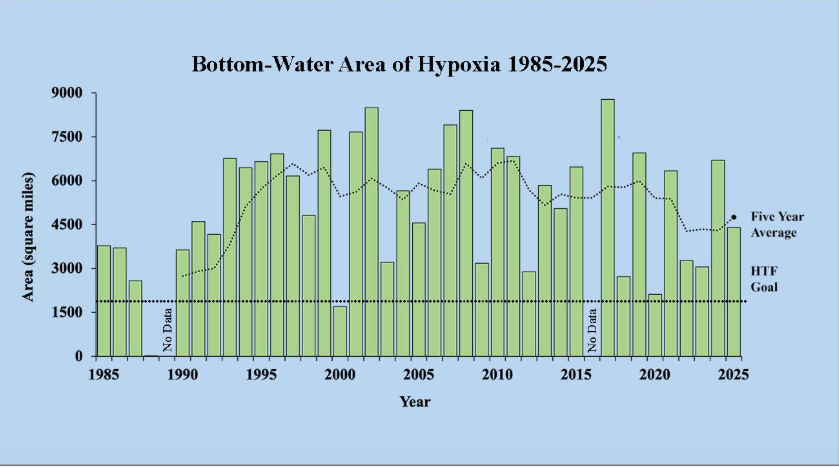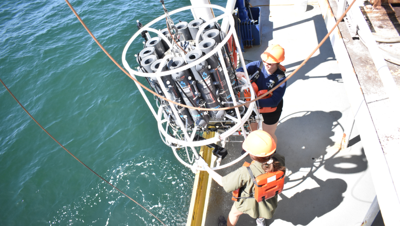
Students Abby Roche and Lily Tubbs retrieve the CTD (conductivity, temperature, depth) sensor package after profiling dissolved oxygen at a station on the Shelfwide Hypoxia Cruise. (Image credit: Courtesy of Cassandra Glaspie/LSU)
The following article courtesy of the staff at the National Oceanic and Atmospheric Administration.
NOAA-supported scientists announced today that this year’s Gulf of America “dead zone” — an area of low to no oxygen that can kill fish and marine life — is approximately 4,402 square miles, 21% smaller than estimates from early June and the 15th smallest measurement on record. This equates to roughly 2.8 million acres of habitat potentially unavailable to fish and bottom-dwelling species, a reduction of 30% from the previous year.
Data from the survey is available online for the public.
Scientists at Louisiana State University and the Louisiana Universities Marine Consortium (LUMCON) led the annual dead zone survey July 20-25 aboard LUMCON research vessel Pelican. This annual measurement is a key metric that informs the collective efforts of the Mississippi River/Gulf of America Hypoxia Task Force, which has set a long-term goal of reducing the five-year average extent of the dead zone to fewer than 1,900 square miles by 2035.
"This year's significant reduction in the Gulf of America's 'dead zone' is an encouraging sign for the future of this area," said Laura Grimm, acting administrator of NOAA. "It highlights the dedication and impactful work of NOAA-supported scientists and partners, and serves as a testament to the effectiveness of collaborative efforts in supporting our U.S. fishermen, coastal communities, and vital marine ecosystems. We are proud of these achievements and remain committed to fostering the research and strategies that ensure the health and vitality of our oceans for generations to come."
















